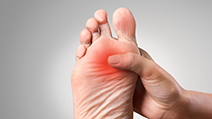Iron, folic acid, and magnesium are especially important elements for the female body. They are important for blood formation, offsetting blood loss and menstrual cramps. In pregnant or breastfeeding women, a deficiency of these biofactors can interfere with child development or even endanger it. A balanced diet that includes the essential biofactors iron, folic acid, and magnesium can prevent an undersupply, while making you feel just more energetic and healthier. Learn how to detect the signs of iron and magnesium deficiency and how much folic acid you need during pregnancy.



